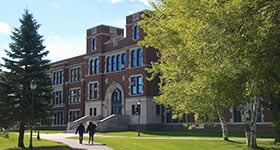When students with a cognitive disability approach graduation, they need a transition plan. The educational support provided by law for students in elementary, middle and high schools disappears when a student graduates. Therefore, teachers, students and families must begin to plan for life after high school.
Previous generations of students with special needs were most likely expecting to work in a low-wage job and live their entire life with a family member.
Times have changed, however, and post-secondary plans have opened up for these students. Realistic and optimistic goal planning, government funding, and career opportunities can mean a lifetime of independence and success for students with cognitive disabilities who want to go to college, work hard and beat the odds.
Goal Planning for Life After High School Is Critical
When developing an Individualized Education Program (IEP) for students who receive special services, the special education team, comprising teachers, guardians, administrators, and other service providers, spends a significant amount of time setting appropriate goals to address academic, behavioral, and social/emotional deficits. These goals are a key component when designing a successful plan, and they must be specific, measurable, action-based, realistic and time-bound.
In most states, when a student reaches the age of 16, special education teams are required to create a transition plan, anticipating the student’s post-secondary life. Three of the key domains of transition planning are continued education, appropriate employment and independent living. In the past, high school graduates with special needs did not see many examples of their cohort going to college or landing jobs that paid a living wage. In addition, living in group homes or with relatives was considered the only option for housing.
But it has become increasingly apparent that, with the appropriate support systems in place, students with special needs can attend college, prepare for jobs in a variety of careers, and learn to live independently. It is up to the special education team, primarily the special education teacher, to design goals that will follow students to and through college to create a structure and provide challenges as students get older.
Government Support and Funding Is Working
College life and traditional college coursework have long been considered out of reach for students with disabilities. Living independently, even in a dormitory, presents challenges not faced at home. In addition, the expense of personal assistants and tutors is quite significant and unaffordable for many families.
The Higher Education Opportunity Act (HEOA) of 2008 provided access to financial aid for students with intellectual disabilities. It set forth reasonable circumstances under which special needs students can apply for federal financial aid to attend college.
Then, in 2010, under HEOA, the U.S. Department of Education began funding Transition and Postsecondary Programs for Students with Intellectual Disabilities (TPSID). This program “provides grants to institutions of higher education or consortia of institutions of higher education to enable them to create or expand high quality, inclusive model comprehensive transition and postsecondary programs for students with intellectual disabilities.”
With this financial support, colleges across the country were able to launch programs for students with disabilities that focused on three broad areas: independent living, academic access, and employment.
A report by ThinkCollege National Coordinating Center indicated the following:
- In the 2014-2015 school year, 60 percent of students involved in the program lived in housing where the majority of the students were supported by TPSID. Sixty-three percent of the students who lived off-campus were living independently, and 14 percent were living in supervised or supported living settings.
- Forty-five percent of the classes in which students with special needs enrolled were academically inclusive courses — courses typically attended by students without disabilities. The TPSID program ensured that disabled students received accommodations, including access to professors’ notes, early access to materials, and tests in modified formats.
- In terms of employment, 76 percent of the students who exited the program “were reported as having a paid job, participating in unpaid career development activities, or doing both.”
What Else Can the Special Education Teacher Do?
Every year, more post-secondary schools are establishing programs for students with special needs. As more opportunities open up for these students, teachers at the elementary, middle and high school levels can encourage them to consider attending college. There are several specific ways that educators can support their students, starting at the elementary level:
- Encourage students to develop self-advocacy skills for personal as well as academic needs.
- Provide frequent and consistent opportunities for students to interact with advanced technology.
- Suggest that the students enroll in challenging middle and high school classes, which will help them develop time management skills and study and test-taking strategies.
- Keep the student’s eligibility status up to date.
When you earn a Master of Science in Education — Special Education, you will be qualified to work with students with cognitive disabilities, many of whom dream of going to college and living on their own. With the specialized training you receive, you will have the opportunity to not only support these students as they move through the elementary, middle and high school years, but also to advocate for them as they attend college and begin life as self-supporting, independent adults.
Learn more about UW-Superior’s Master of Science in Education — Special Education online.
Sources:
The Atlantic: The Path to Higher Education With an Intellectual Disability
Center for Parent Information & Resources: Transition Goals in the IEP
ThinkCollege: Higher Education Act of 2008
U.S. News & World Report: 8 Steps for Learning-Disabled Students Who Want to Go to College


